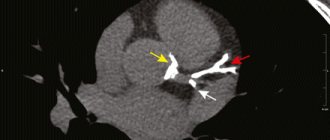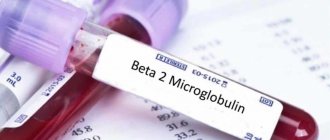What are the dangers of lack of oxygen?
- sleep disturbance or drowsiness;
- headaches and migraines;
- weakness and muscle pain;
- depressive states;
- chronic fatigue syndrome;
- decreased immunity and susceptibility to colds;
- decreased concentration and reaction speed;
- skin problems and premature aging;
- disruption of the cardiovascular and respiratory systems.
We live while we breathe! In an oxygen-free environment, the brain cannot withstand even 5 minutes. Therefore, it is important that oxygen constantly and in the required quantities enters our body. For the smooth functioning of the body and proper breathing, the surrounding air must contain 20–21% oxygen. But in cities the situation is aggravated due to emissions from industries, fumes from asphalt roads, etc. A decrease in this concentration leads to the development of ailments or exacerbation of chronic diseases.
How to distinguish cardiac from pulmonary dyspnea
The real cause is accompanied by symptoms of the disease that provoke dyspnea, which can be:
- Acute – develops within a few minutes
- Subacute – develops over several hours or days
- Chronic – persists for several weeks or months
When an acute form is observed, it is necessary to urgently call an ambulance.
The tables show precipitating diseases and their symptoms, as well as recommendations for medical care. This will help determine the type of shortness of breath and take appropriate measures.
Pulmonary dyspnea - causes and signs
| Disease | Symptoms | Health care |
| Asthma | Wheezing, which begins spontaneously, is accompanied and caused by exposure to provoking factors (upper respiratory tract infections, allergens, cold air, physical activity) | Examination by a doctor to determine the respiratory rate and functionality of the respiratory tract |
| Pneumothorax | Suddenly the respiratory rate is disrupted and acute chest pain appears. Often occurs spontaneously, as well as after injury and in people with COPD | Chest X-ray |
| Pulmonary embolism | Spontaneous chest pain that worsens with inspiration, rapid heart rate and breathing | Examination using CT and angiography |
| Pulmonary hypertension | Gradually increasing intensity of shortness of breath, cough, weakness, swelling of the legs | Echocardiography, cardiac catheterization |
| Restrictive diseases | Difficulty in breathing appears against the background of professional activities associated with prolonged inhalation of irritants | Chest X-ray, pulmonary function test |
| Exacerbation of COPD (chronic obstructive pulmonary disease) | Productive or nonproductive cough (with or without sputum), inhalation and exhalation through pursed lips, wheezing with whistling | Examination by a doctor, chest x-ray |
| Pneumonia | Sharp chest pain when inhaling, fever, cough, weakness, unusual noises in the lungs | Examination by a doctor, chest x-ray |
| Obstructive pulmonary disease | Violation of respiratory rate provokes heavy smoking, a history of emphysematous chest | Chest X-ray, respiratory function tests |
Cardiac dyspnea - causes and signs
| Disease | Symptoms | Health care |
| Heart failure, ischemic heart disease |
|
|
| Infarction or acute myocardial ischemia | A feeling of deep pressure in the chest, which may be accompanied by pain radiating to the jaw or arm | Electrocardiography, cardiac catheterization, blood tests |
All three forms of shortness of breath require consultation with a cardiologist, pulmonologist, endocrinologist or other specialists who will prescribe an appropriate examination and select the correct treatment methods.
Sources:
- “Diseases of the lungs and respiratory tract. Symptoms of lung diseases. Dyspnea,” MSD Manual
- “How to understand the “language” of shortness of breath?”, Atmosfera magazine. Pulmonology and allergology", No. 4, 2012
- “Treatment of shortness of breath in patients with end-stage cardiovascular and pulmonary diseases from the perspective of evidence-based medicine,” Journal of Palliative Medicine and Rehabilitation, No. 2, 2005
- “Dyspnea: pathophysiological and clinical aspects”, Journal “Therapeutic Archive”, No. 3, 2005
How to replenish oxygen deficiency
Do you remember where it’s easiest to breathe?
Right! In a forest or park. Especially if it is located at a decent distance from industrial cities. The air there is completely different, the trees purify it. Therefore, the first advice: walk as often and as much as possible, get out into nature. In the forest belt, the air is naturally saturated with oxygen.
An adult tree “releases” 118 kg of oxygen per year, which provides safe respiratory therapy for a family of 2 people. You always return from a walk refreshed, feeling a surge of vivacity and energy.
But what about those who don’t have a park nearby and don’t have the opportunity to go into the forest often? There is a way out in such cases too! Oxygen inhalations will help quickly saturate the body with the necessary oxygen. They are carried out using a special oxygen cartridge.
What affects the production of erythropoietin?
Here's what contributes to decreased oxygen levels in the blood and increased production of erythropoietin:
- high altitude
- hypoxia
- lung diseases
- heart disease
High altitude
At higher altitudes, air pressure is lower, which means there is less oxygen in each breath. The body compensates by increasing the production of erythropoietin and red blood cells to maintain stable oxygen levels in the blood. This response helps combat symptoms of altitude sickness caused by decreased oxygen levels.
☝️When adapting to high altitudes, different people show big differences: some quickly produce more erythropoietin, others much more slowly.
The body's response to high altitude is partly determined by genetics. Populations that have traditionally lived at high altitudes for thousands of years, such as the Himalayan Sherpas, produce more erythropoietin and have, on average, more red blood cells than people living at sea level.
What is he like?
The oxygen cartridge contains a concentrated breathing mixture consisting of 80% oxygen and 20% nitrogen. This composition ensures maximum absorption of oxygen during inhalation. Cans are available in different volumes: 8, 12 and 16 liters. They weigh from 140 to 180 grams. The oxygen cartridge does not take up much space in your purse, which allows you to carry it with you.
What is erythropoietin?
Erythropoietin is a hormone that helps the body maintain optimal oxygen levels. To do this, it stimulates the production of red blood cells or red blood cells.
Red blood cells provide our tissues with oxygen and remove carbon dioxide. When oxygen levels drop, erythropoietin helps replace the loss by increasing the production of red blood cells and hemoglobin. Here's how it happens:
The kidneys have specialized cells that can detect when oxygen levels in the blood are low. If this is the case, the kidneys produce more erythropoietin. The hormone triggers the maturation of hematopoietic stem cells in the bone marrow. These are the precursors of red blood cells, which with the help of erythropoietin turn into full-fledged cells.
How is oxygen inhalation performed?
The oxygen cartridge is equipped with a simple, convenient dispenser. Thanks to the dispenser, the cylinder can be used by several people.
Individual use of a can with a mask provides control over the flow of the mixture and prevents the ingress of impurities from the surrounding air. The procedure is performed with the help of a mask for children, the elderly and people with disabilities.
If a person has a serious illness and requires constant oxygen therapy, it is recommended to purchase not an oxygen canister, but a concentrator. A special device that produces high concentration oxygen from 1 to 3 liters per minute. In this case, the patient breathes through a mask or nasal cannula. The number and duration of procedures is determined by the attending physician. This therapy is prescribed for patients with pulmonary pathology, heart disease, cancer, and nervous system disorders. Sessions can be performed at home or in a hospital setting.
How many breaths should you take?
Usually, to return to normal well-being and to relieve symptoms of oxygen deficiency, 2 to 5 deep breaths within 10 minutes are enough.
Just 5 breaths and here you have clarity of thinking and a clear head!
To prevent diseases and strengthen the immune system - 2 sessions of 5-10 breaths daily.
In a stressful situation, as well as to improve performance, 2–3 sessions with an interval of 10 minutes, consisting of 8–10 breaths, are recommended.
What does excess erythropoietin mean?
Increasing erythropoietin levels causes the bone marrow to produce more red blood cells. Constantly elevated levels of this hormone signal a chronic lack of oxygen in the blood, for example, due to iron deficiency anemia. Also, an increase in erythropoietin levels can be caused by a tumor that secretes the hormone. For example, renal cell carcinoma.
In rare cases, too many red blood cells can cause a condition known as secondary polycythemia. It is associated with a number of serious health risks:
- increased blood viscosity
- less efficient blood supply and oxygen saturation
- high blood pressure in the lungs
- life-threatening blood clots
- stroke
Beneficial effect of oxygen inhalation
- Increases the tone and activity of the body mentally, sexually and physically.
- Maintains health in environmentally unfavorable living conditions.
- Stimulates metabolic processes.
- Accelerates the replenishment of energy reserves.
- Recovery from injuries and operations is faster.
- Strengthens and tempers the immune system.
- Eliminates symptoms of motion sickness in transport.
- Normalizes night sleep and rest, helps cope with insomnia.
- Increases stress resistance.
- Improves the functioning of internal organs, blood vessels and systems.
- Improves the quality of life and has a beneficial effect on the psycho-emotional state.
Is it worth using erythropoietin in sports?
In recent decades, professional athletes have discovered significant benefits from erythropoietin. This hormone significantly increases the absorption of oxygen into tissues, which can increase endurance and performance.
How are athletic achievements and genetics related?
Erythropoietin is part of a group of blood doping products that are prohibited by the Medical Commission of the International Olympic Committee (IOC) and the World Doping Agency. One of the reasons for the ban was the high health risk.
The use of erythropoietin as a doping agent results in abnormally high red blood cell counts. Blood thickening occurs and the risk of serious side effects increases:
- allergic reactions
- blood clots
- flu-like symptoms
- heart attack
- high blood pressure
- pulmonary embolism
- seizures
- stroke








